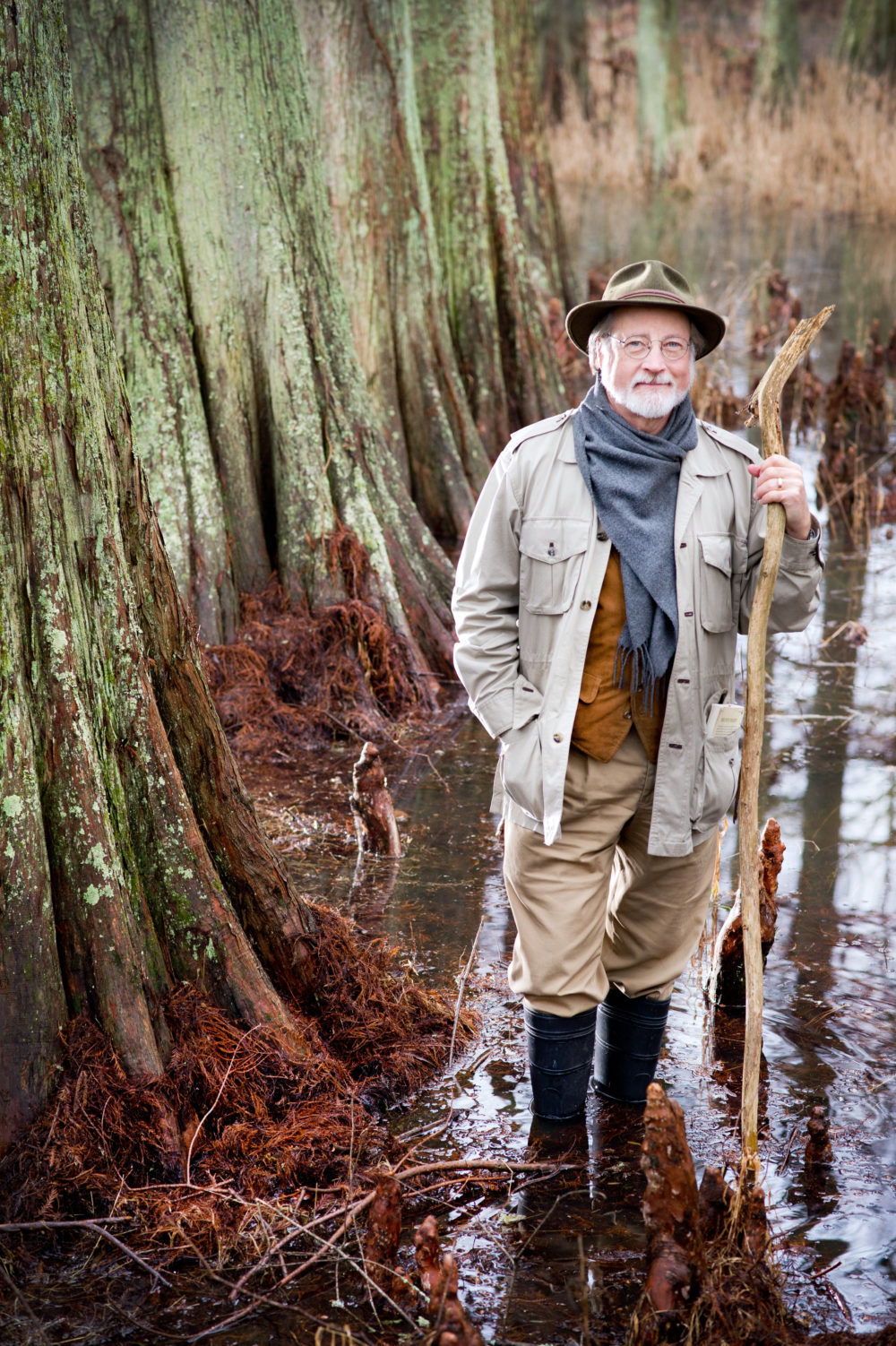Farming Coastal Waters: Applied Research Supports Oyster Growers
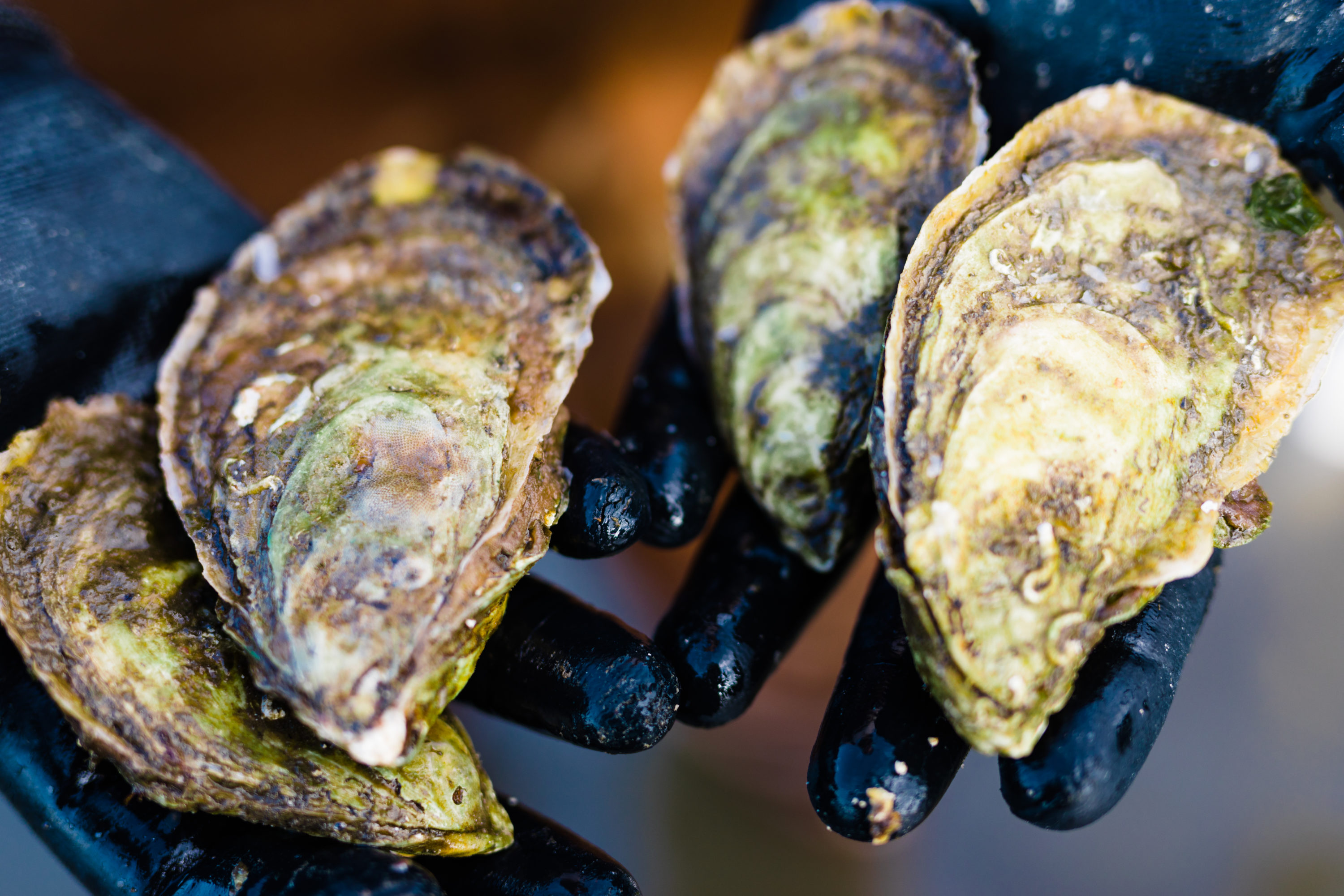
North Carolina is cultivating its love of oysters — along with economic opportunities for coastal communities.
“Our oyster farming industry is expanding,” says Chuck Weirich, North Carolina Sea Grant’s marine aquaculture specialist.
The state’s industry — now producing about $2 million worth of farmed oysters annually — still lags behind neighboring Virginia, whose tally is about $18 million. However, North Carolina is poised to become a major player in oyster farming.
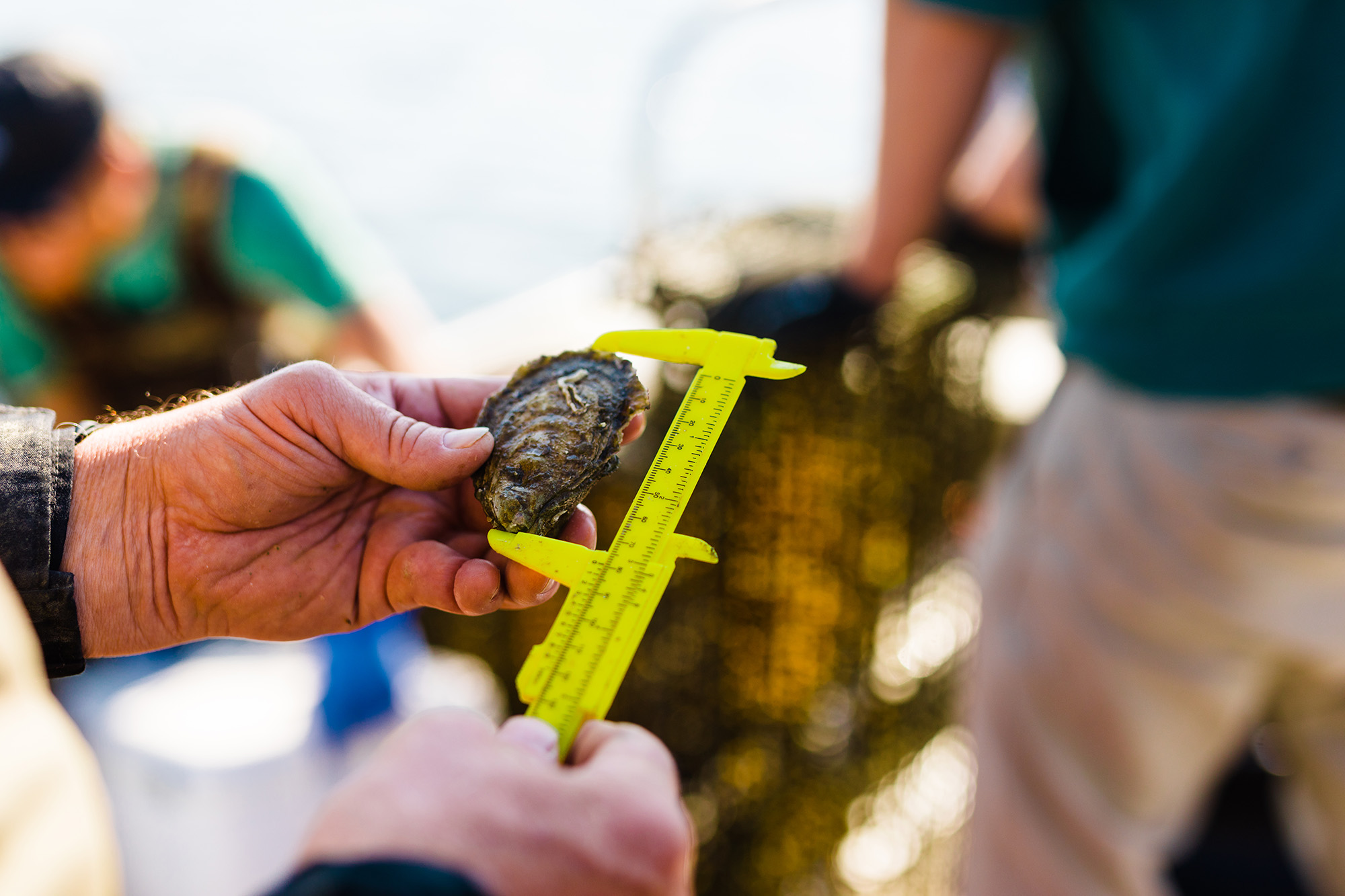
“Established and new growers here are eager to meet the increasing demand for single oysters to be served on the half-shell,” adds Weirich, who leads an applied research program to help the industry improve efficiency and productivity.
Jay Styron, president of the North Carolina Shellfish Growers Association, notes that the state’s farmed oysters are gaining an excellent reputation among chefs and seafood consumers. “Due to our state’s vast coastal resources, our industry has room to grow across a range of conditions, including salinities,” he explains.
“Oysters, like fine wines, take on the flavor of the location where they are grown. Having that variety of flavors appeals to oyster aficionados,” Styron adds.
Rowen Jacobsen, a food writer and author of A Geography of Oysters, agrees — and has cited North Carolina’s potential to become the “Napa Valley of oysters.”
In the wild, oysters are harvested from the bottoms of sounds and estuaries, where young oysters, known as spat, attach to older shells. To achieve single oysters, producers obtain water column leases from the state, and then use containers — bags, baskets and cages referred to as gear — to hold and grow oysters until harvest.
Interest in shellfish aquaculture is clearly on the rise, as reflected by applications for bottom leases and water column leases. In 2014, each category had about 10 requests. By 2017, each had more than 50 applications, according to the N.C. Division of Marine Fisheries, or DMF.
In particular, water column leases increased from just two leases totaling six acres in 2011 to 48 in 2017, with a total of 153 acres — all focused on production of oysters.
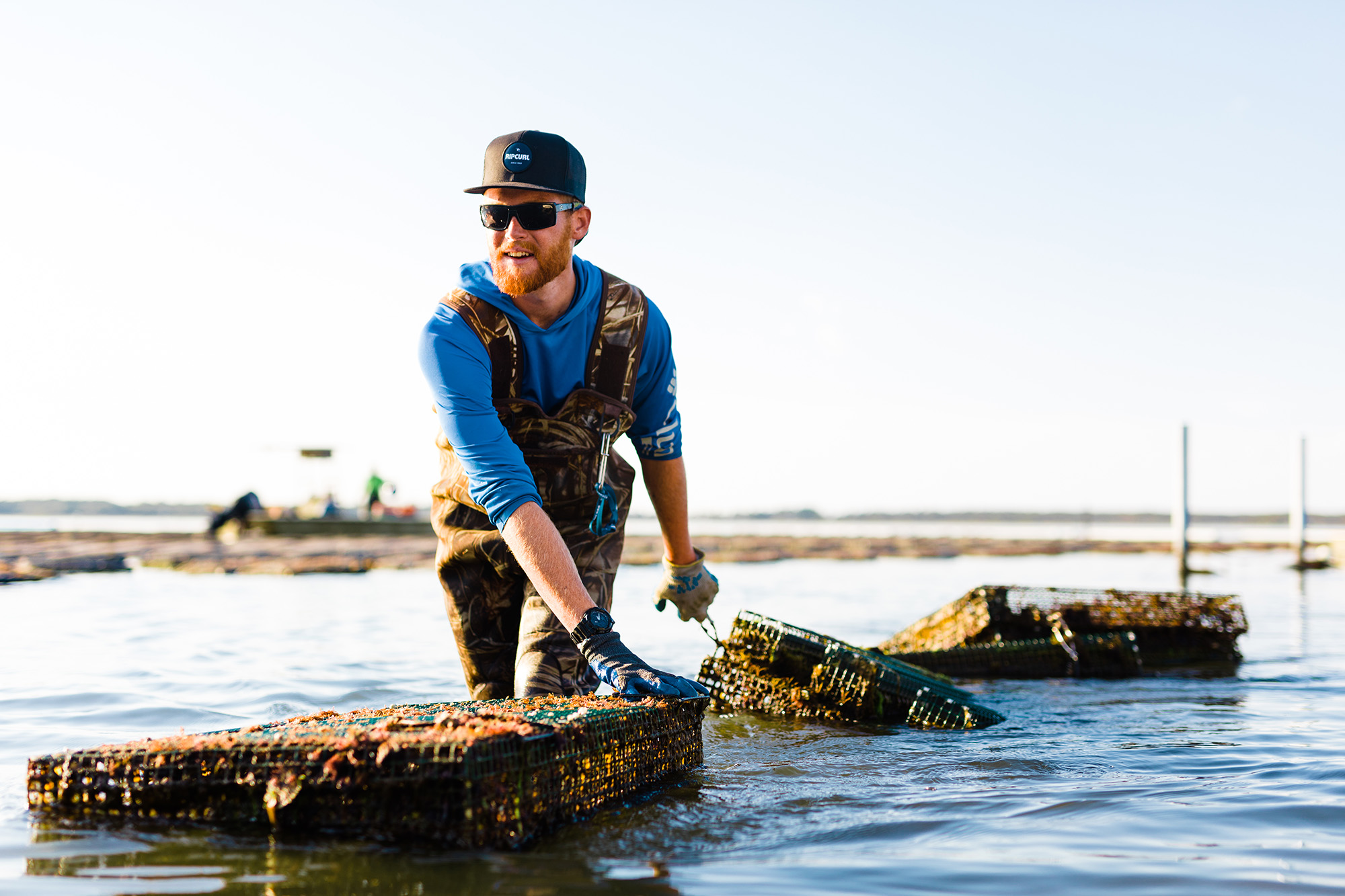
DMF Director Steve Murphey notes recent regulatory reforms have eased some restrictions to entry into the industry. “These reforms lowered the overall cost of a lease,” he says. Also, legislative actions provided baseline funding and staff for the N.C. Shellfish Leasing Program.
However, challenges remain. “Intensive gears used in bottom and water column leases can grow greater densities of shellfish per acre,” Murphey explains. But leases with culture gear also may conflict with existing water uses, such as recreation, fishing and navigation, he adds.
These concerns are important considerations for industry development, many partners agree. “Sea Grant works with growers to help size leases and select gears that will be successful,” Murphey says, noting that these collaborations help to reduce larger speculative leases, and to ensure that lease sites are productive.
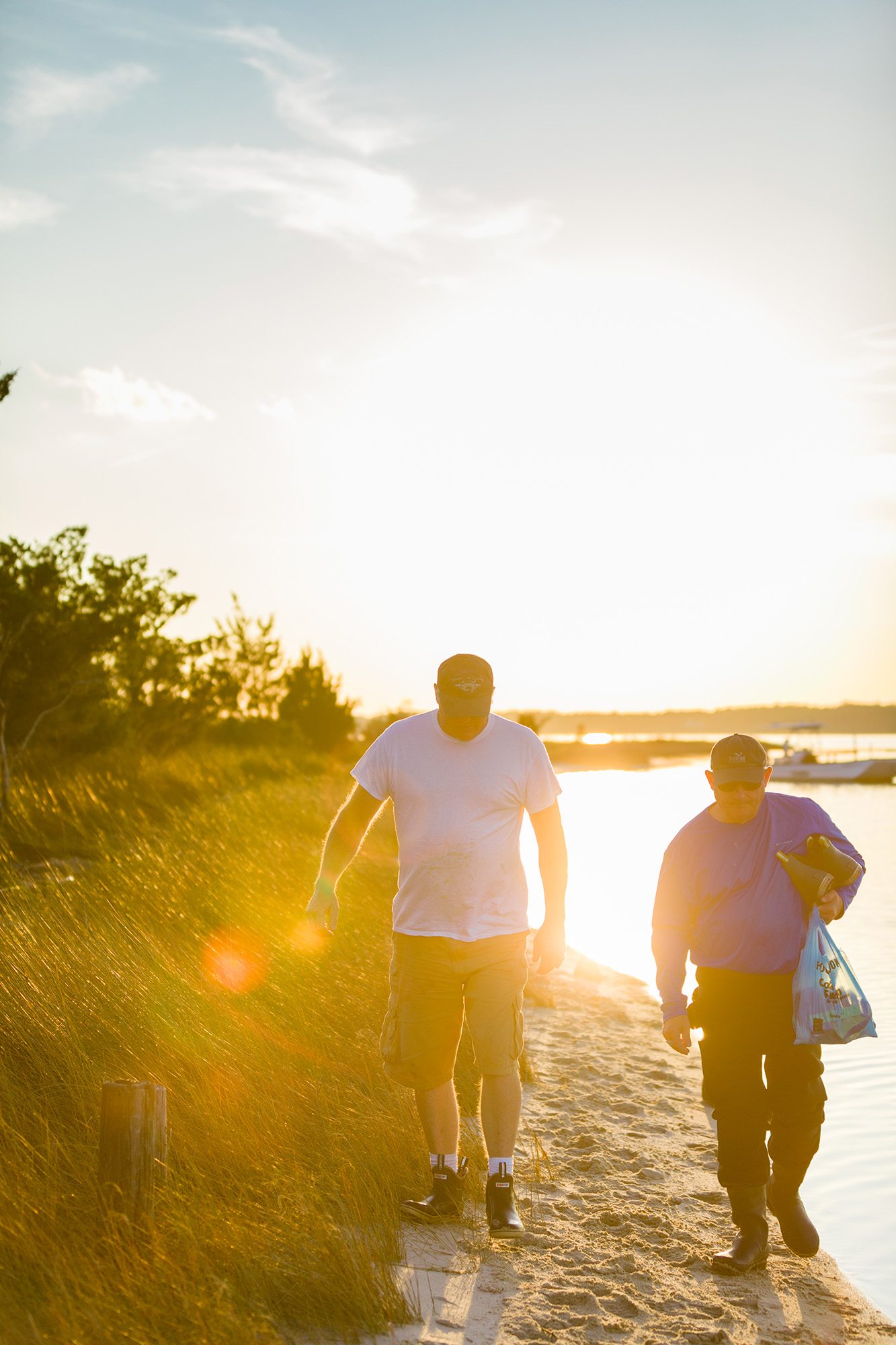
Working with Industry Partners
In 2015, Weirich partnered with scientists from the University of North Carolina Wilmington and Carteret Community College to secure funding from the National Sea Grant College Program for research into improving oyster production.
Their study involved five commercial oyster farms representing the state’s northern, central and southern coastal regions. Participating farms were: Topsail Sound Shellfish Company in Hampstead, Morris Family Shellfish Farms in Sea Level, Carolina Mariculture Company in Cedar Island, Chadwick Creek Oyster Company in Lowland and Wanchese Fish Company in Wanchese.
“Working with the industry partners, we sought to compare on a commercial scale some of the most common gears available to growers,” Weirich says. The team looked at floating bags, off-bottom cages, long-line baskets and floating cages to see if there were differences in oyster production and survival.
The project also sought to optimize production via genetic selection, by building upon work of the UNCW Shellfish Research Hatchery’s breeding program. Ami Wilbur, hatchery director, has led research to identify regional strains of the native eastern oyster best suited for farming.
“We evaluated the performance of four strains of native N.C. oysters using the different gear types at each of the study sites. The results will help guide future efforts by our research program,” Wilbur notes.
The research team also included Troy Alphin from UNCW, who documented the amount of plankton available to oysters, which are filter-feeders, at each site.
The gear sets were assembled in fall 2016, with 12 units of each of the four gear types installed at the industry partners’ sites to allow comparison of gear and oyster strains. The units were stocked about one-quarter full with seed oysters, each just under an inch long.
Weirich’s team reviewed and counted oysters each quarter to determine survival rates. A random sample of 20 oysters also was collected from each unit to assess growth, shell shape and condition. In late 2017, final field statistics were gathered, including the percentage of oysters — from each strain/gear type combination at each site — that reached a market size of at least three inches.
Throughout the yearlong study, students from UNCW and Carteret Community College were part of the team. They helped to construct, install and maintain the gear, as well as to gather data. “Our students received valuable hands-on experience throughout the study — the type of knowledge you can’t obtain just by taking a course,” says Dave Cerino, CCC aquaculture program chair.
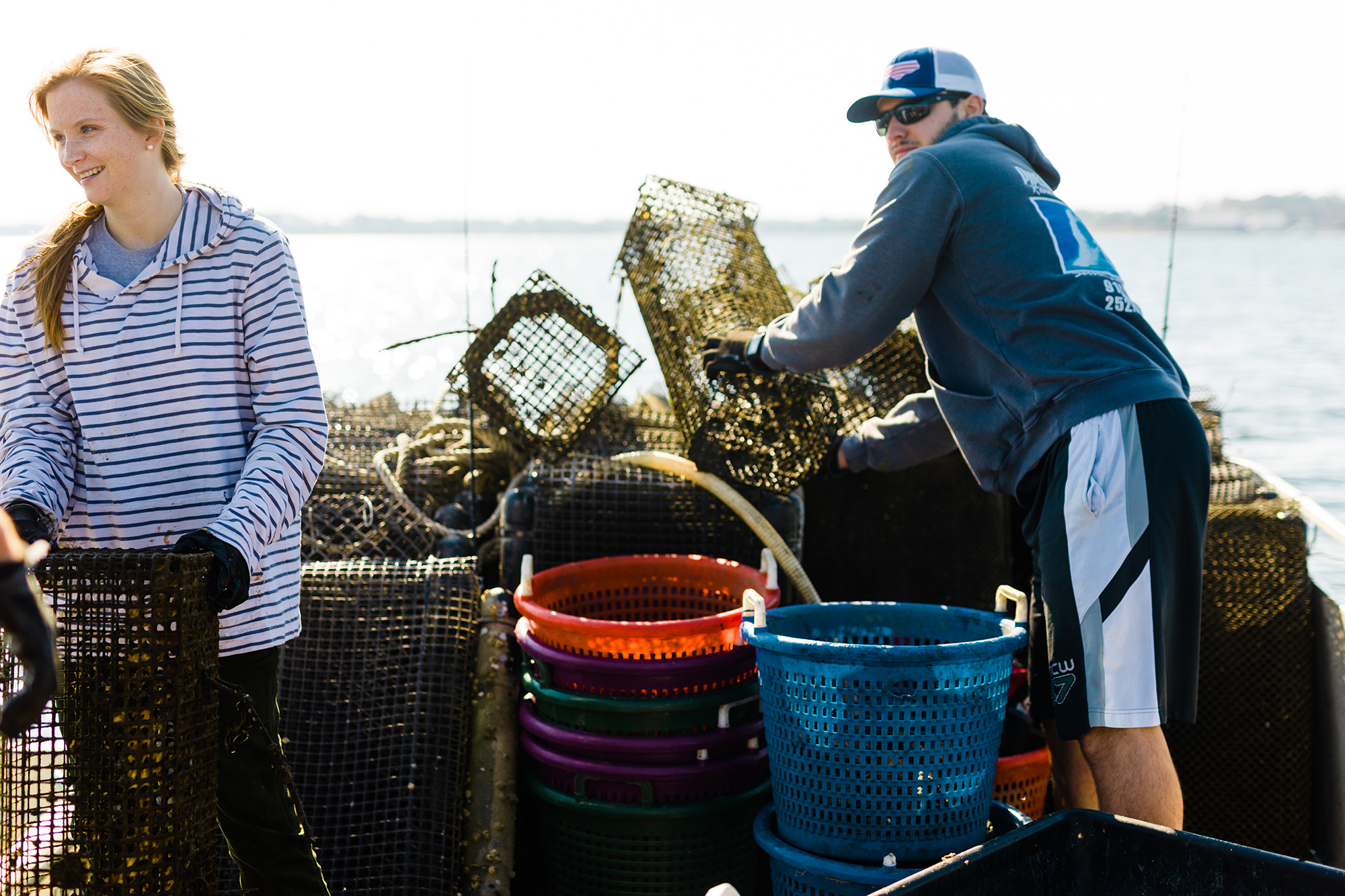
Research findings will be released soon. “We are eager to share results with the industry at the N.C. Aquaculture Development Conference in March, as well as at the National Shellfisheries Association meeting later that month,” Weirich notes. He also will present the study results in a Coastwatch Currents blog post on the Sea Grant website, ncseagrant.org.
“This type of applied research, involving academic and industry partners, supports a key part of Sea Grant’s mission — sustainable and responsible economic development in coastal communities,” Weirich adds.
In fact, the current research is just part of Sea Grant’s ongoing efforts in aquaculture research and outreach. North Carolina Sea Grant is working with partners in the state and beyond who are interested in a new round of the National Sea Grant aquaculture competition. For more information, contact Weirich at chuck_weirich@ncsu.edu.
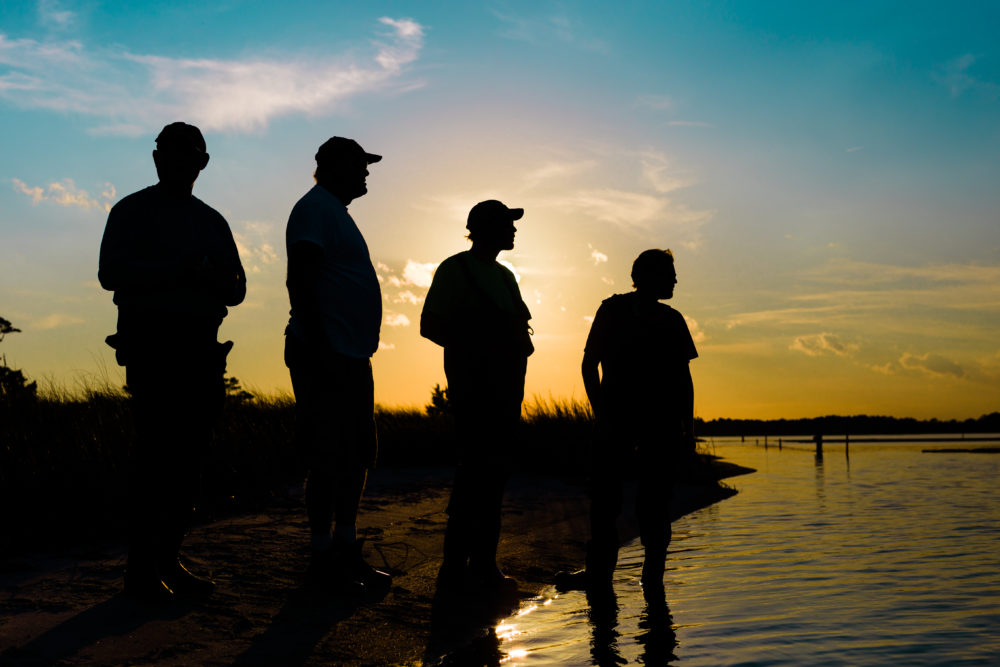
MARCH MEETING FEATURES N.C. AQUACULTURE
Shellfish and finfish topics will be on the agenda for the 2018 North Carolina Aquaculture Development Conference, set for March 7 to 10 in New Bern.
This annual meeting brings together the interested public, current and prospective growers, scientists, and others who want to know more about finfish and shellfish aquaculture in the state. The conference, at the New Bern Riverfront Convention Center, includes a trade show.
Chuck Weirich, North Carolina Sea Grant’s marine aquaculture specialist, will provide updates, including results of applied research on oyster culture.
Aquaponics will be the focus of a workshop on March 7. A freshwater farm tour is set for March 8. March 9 will include overall conference presentations, along with the Cultured Seafood Festival that evening. Weirich will lead a shellfish mariculture session on March 10.
For more information and to register, visit ncaquaculture.org.
- Categories:

